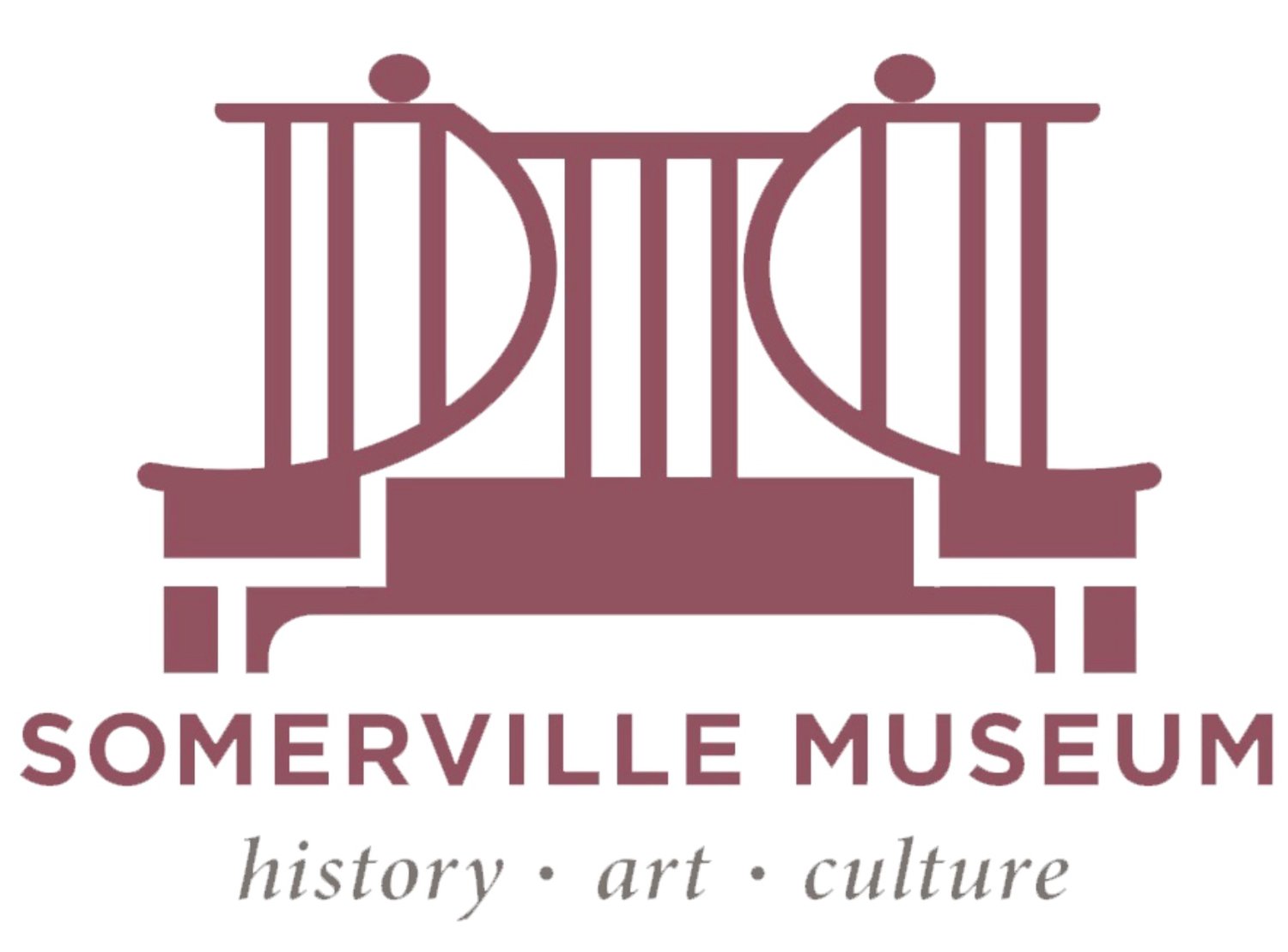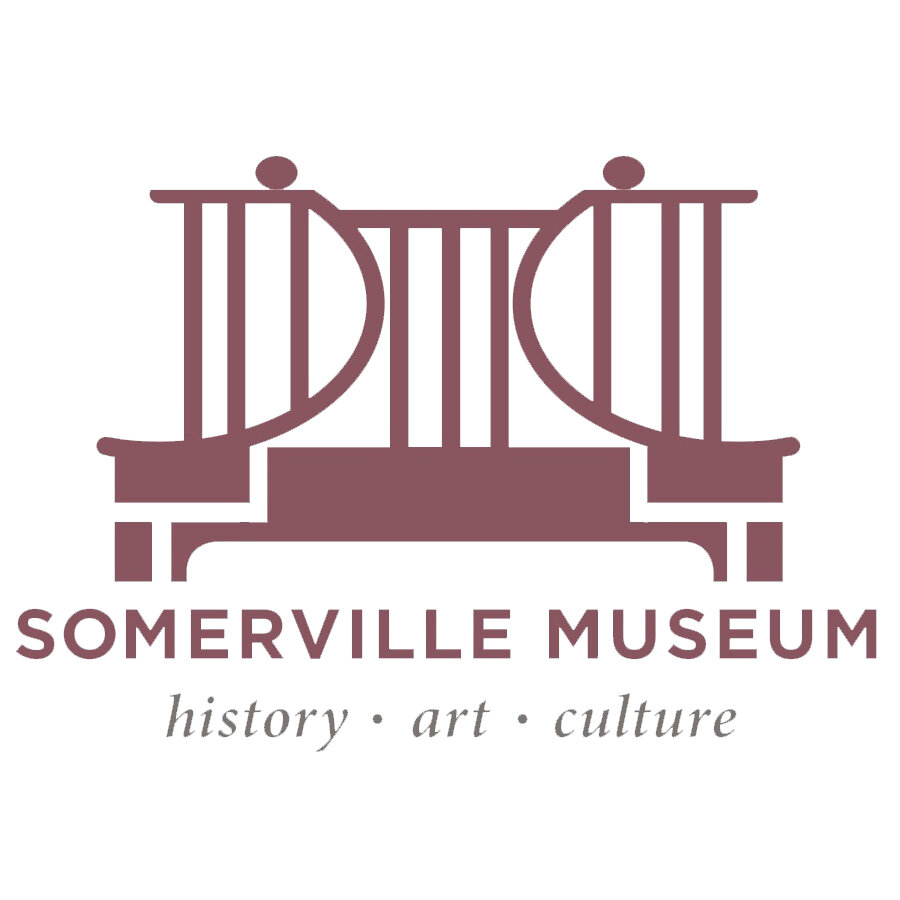Lifting the Veil: Remembering the Burning of the Ursuline Convent
April 20-December 1997 | Organized by Nancy Natale and Nancy Lusignan Schultz, Ph.D. Art curators, in addition to Natale and Schultz, were Shawn Hill and Cecily Miller.
Participating Artists: Lorey Bonante, Debra Olin, Sarah Smiley, Juliann Cydylo, Fontenel Pointjou,r Randal Thurston,
Michele Miller, Kurt Reynolds, Margaret B. Tittemore
Making Connections
Nancy Lusignan Schultz
If I were asked to name a central theme of Lifting the Veil, it would have to be "making connections." As the long list of acknowledgements in the catalog attests, many persons contributed to the making of the exhibit, and the exhibit helped to forge connections between diverse groups of people. This project brought together longtime residents of the Nunnery Grounds and other parts of the City of Somerville, who answered the calls for artifacts or connections to the burning of the Ursuline convent that ran on City Cable, in The Somerville Journal, and in The Pilot. For example, a retired DPW worker contacted us regarding the fascinating story of the historical marker of Mount Benedict which had been moved from Illinois Avenue to the front of the East Branch of the Somerville Public Library. Artifacts and books from the Somerville Library’s extraordinary collection on the Ursuline convent rest in exhibit cases alongside precious objects loaned by the Ursuline Sisters in Dedham, Massachusetts. Articles in this catalog have been contributed by Salem State College faculty members Sandra Fowler and Patricia Johnston, by Marie Daly of the New England Geneological Society, as well as by local independent scholars Elizabeth Kenney and Dee Morris. Paul DeAngelis has followed in the honorable tradition of past Directors of the Somerville Public Library, particularly of that excellent historian of Mount Benedict, George Hill Evans, by contributing his recollections of growing up in the Nunnery grounds. This exhibit has brought together those interested in Somerville’s colorful history and its flourishing arts community.
The compelling connections between the history and art could not have been made without the outstanding contributions of Nancy Natale, who was able to make a vision of these connections a reality. Nancy has the careful habits of a scholar, a meticulous attention to detail, and an intuitive sense of the look of nineteenth century Boston. In the history room, for example, she was able to work wonders with photocopied images, by painting them with watercolor so they are hardly distinguishable from the period pieces in the room. Every wall, every case and even the windows bear the mark of her exceptional sense of detail. Her well-earned position of respect in the arts community attracted proposals from artists of exceptional calibre, and we were fortunate to be able to select works for the exhibit by Lorey Bonante, Juliann Cydylo, Michele Miller, Fontinel Pointjour, Debra Olin, Kurt Reynolds, Sarah Smiley, Margaret B. Tittemore and Randall Thurston.
Ultimately, their works of contemporary art provide inspiring parallels to the dramatic story of the burning of the Ursuline convent and its complex causes as illustrated on the Wheel of History created for the show. Spin the Victorian hand pointing a finger and you will find that this tragedy resulted from religious strife, vast economic changes, debates over education, struggles over national identity, shifts in the power structure of the government, the inflammatory role of the media, class struggle, or tensions over gender roles in antebellum America. In your grandpa’s history, the explanations may have seemed simpler, but contemporary historians are more likely to revel in the recognition of multiple causes and interpretations. In this way, looking at history becomes as creative as looking at art.
Lifting the Veil’s Wheel of Art, too, has its Victorian finger that points to multiple interpretative strategies, ranging from old fashioned formalist analysis of composition, materials and color to a recognition of the way that the surrounding culture, even the local arts scene, contributes to the production and promotion of art works. Response to art can be extremely personal ("Do I like it? Does it remind me of something?") to extremely historical, examining, for example, an artist’s life and times to better understand the artist’s work.
Consider the way that dark moments in history are represented in Lifting the Veil. The frantic flight of terrified nuns escaping the convent rioters to hide the ciborium that held the consecrated Host in a rosebush is represented in Kay Canavino’s stunning photograph of roses lying at the engraved base of the covered silver chalice. Or the way that age has turned the books from a century and a half ago into sepia-toned objects of delicate beauty, even those pseudo-pornographic convent captivity narratives that generated so much anti-Catholic feeling. And that art, like Juliann Cydylo’s quietly subversive, intricately embroidered pieces can carry powerful messages about cultural oppression of women. Or the way that Kurt Reynold’s "Phoenix," of rough-hewn wood and barbed wire with its Nazi-issued pink triangle and Party armband, simultaneously calls attention to discrimination against gay people, to the Holocaust, to discrimination against immigrant groups like the Catholics, and to the sad long history of intolerance in every nation and time period.
These are connections worth making.
--From the exhibition catalog, Lifting the Veil: The Burning of the Ursuline Convent, 1997.
Go to Lifting the Veil for more information and photos.


